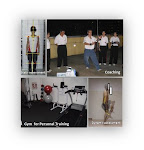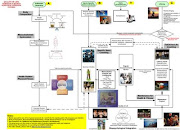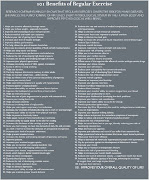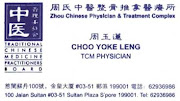Many times, women will blame age for the stiffening of the joints but the truth is that often it is associated with hormonal change in the body. Of course, age is a factor but not necessarily the culprit. Interestingly, if you notice morning or anytime stiffness, you should be checked out by your doctor to rule out other possibilities. For example, being overweight could cause stiffness and joint pain. Having an inflamed digestive tract could also be a problem in that dysbiosis in the digestive system leads to systemic inflammation, thus the stiffness and pain. Cortisol and insulin could also be the problem since they are both inflammatory agents. Having an imbalanced eicosanoid, which are hormone-like biochemicals can cause stiffness.
As you can see, what many women claim to be simply menopause stiffness could in fact be something very different, something to be concerned with. Therefore, rather than ignore the stiffness, be sure to see a doctor. However, if you are experiencing menopause stiffness, this is likely caused from the change or fluctuation of estrogen and progesterone in the body. In this case, the stiffness just makes life a little more challenging but keep in mind you can do a number of things to find relief.
For menopause stiffness, you can change your diet, eating lean meats, more fresh fruits, and vegetables, sticking with whole grains, and avoiding excessive sugar, alcohol, and processed foods. Incorporating exercise into your daily routine is also beneficial. Although you might have menopause stiffness, you need to be moving to loosen up the muscles and joints through exercise. For some women, a type of hormone replacement therapy can help with the menopause stiffness but this should be a last resort, as HRT also brings about unwanted side effects and risks.
Of all these things for menopause stiffness, the most beneficial is exercise. Using exercises such as joint flexibility through warm-up and stretches, Tai Chi, Yoga, deep abdominal breathing, and tension release, you can help get the body become limber. With exercise, not only are you relieving menopause stiffness but you can actually prevent a number of other symptoms associated with menopause to include hot flashes, night sweats, urinary tract infection, insomnia, depression, osteoporosis, and so on.
The bottom line is that age is hastened by physical inactivity. When a person does not exercise, he or she is shortening life. However, by walking just at least 30 minutes (after warm-up and stretching) a day, you can greatly strengthen the lungs, bones, skin, digestive tract, nervous system, and more. Exercise is an excellent method for helping alleviate menopause stiffness so you can hop out of bed, as you once did. Best of all, you do not have to become a gym bum, spending every waking hour using high-tech equipment, although you could if you wanted. However, just walking alone will do incredible things for your body. In addition to helping the inside of the body, you will begin to drop weight and tone muscle, looking great on the outside too. The result of that is a healthier psyche, feeling more comfortable and confident.
Remember that in addition to things like menopause stiffness, women going through post menopause are 50% more likely to develop diabetes if not exercising! Then when you consider that weight gain is common among menopause women, exercise becomes even more attractive. Studies show that women who get regular exercise are 31% less likely to develop diabetes than women who do not exercise at all. As a menopausal woman, you owe it to yourself to take care of your body during these challenging years. The menopause stiffness, hot flashes, insomnia, night sweats, and depression do not have to rule your life.
If you notice menopause stiffness, start the morning with some deep abdominal breathing. For this, lie flat on your back, keeping your knees pulled up, and feet slightly apart. Through your nose, inhale deeply and slowly, allowing your stomach to relax. As you breathe in, imagine you are taking in energy. Then, slowly exhale through your mouth, this time imagining that you are pushing the air out from the top of your lungs down. By doing this about 10 times before you get out of bed, you are promoting deep relaxation, stress control, and more energy.
To give your joints more flexibility to help with menopause stiffness, you can work various parts of the body. For this, start by sitting on the floor with your legs stretched out in front of you. Place your hands on either side of your toes, flexing the toes up and down 10 times, Move to the ankles and rotate them in both direction, 10 times each while keeping your heels on the floor. For the knees, bend the left leg, bringing your heel toward your buttock. Lift the leg off the floor, straightening the knee 10 times. When done, do the other knee.
Now for the hips, bend your right leg, placing your food on your left thigh. Hold your right knee with your right hand and the right ankle with the left hand. Slowly and gently, move the knee up and down with the right hand, repeating with the other leg. You can even get rid of menopause stiffness in your fingers by lifting your arms to shoulder height and while keeping the arms straight, open the hands wide. Now, flex the fingers open and closed, 10 times. Menopause stiffness does not have to take control of your life but you have to step up to make changes.
Benefits of physical activity
Whether you've exercised faithfully for years or you haven't been physically active, physical activity during and after menopause offers many benefits. For example, regular physical activity can:
■ Prevent weight gain. Women tend to lose muscle mass and gain abdominal fat during and after menopause. Even slight increases in physical activity can help prevent weight gain.
■ Reduce the risk of breast cancer. Physical activity during and after menopause that results in weight loss may offer protection from breast cancer.
■ Strengthen your bones. Physical activity can slow bone loss after menopause, which lowers the risk of fractures and osteoporosis.
■ Reduce the risk of other diseases. During and after menopause, the risk of various chronic conditions — including cardiovascular disease and type 2 diabetes — increases. Regular physical activity can counter these risks.
■ Boost your mood. Physical activity during and after menopause can improve your psychological health.
Physical activity goals
For most healthy women, the Department of Health and Human Services recommends:
■ At least two hours and 30 minutes of moderate-intensity aerobic activity or one hour and 15 minutes of vigorous-intensity aerobic activity a week — preferably spread throughout the week
■ Strength training exercises at least twice a week
Although frequent, high-intensity physical activity during and after menopause may yield the most health benefits, it's more important to choose a fitness program that you can maintain for the long term. For motivation, set realistic, achievable goals. Rather than vowing to exercise more, for example, commit to a daily 30-minute walk after dinner. Frequently update your goals. Partnering with a friend can make a difference, too.
References
1. Hagey AR, et al. Role of exercise and nutrition in menopause. Clinical Obstetrics and Gynecology. 2008;51:627.
2. Nelson DB, et al. Effect of physical activity on menopausal symptoms among urban women. Medicine & Science in Sports & Exercise. 2008;40:50.
3. Pines A, et al. Exercise in the menopause - an update. Climacteric. 2007;10:42.
4. Elavsky S, et al. Lack of perceived sleep improvement after 4-month structured exercise programs. Menopause: The Journal of the North American Menopause Society. 2007;14:545.
5. Elavsky S, et al. Physical activity and mental health outcomes during menopause: A randomized controlled trial. Annals of Behavioral Medicine. 2007;33:132.
6. Thurston RC, et al. Physical activity and risk of vasomotor symptoms in women with and without a history of depression: Results from the Harvard study of moods and cycles. Journal of the North American Menopause Society. 2006;13:553.
7. Thompson DL. Fitness focus copy-and-share: Menopause and exercise. ACSM's Health & Fitness Journal. 2006;10:4.
8. Bushman B. Exercise and menopause. ACSM Fit Society Page. Fall 2006:3. http://www.acsm.org/AM/Template.cfm?Section=Home_Page&TEMPLATE=/CM/ContentDisplay.cfm&CONTENTID=6128. Accessed Jan. 2, 2009.
9. North American Menopause Society. Achieving optimal health. Menopause Guidebook. 6th ed. Cleveland, Ohio: North American Menopause Society; 2006. http://www.menopause.org/Portals/0/Content/PDF/MG5.pdf. Accessed Jan. 2, 2009.
10. Obesity and cancer: Questions and answers. National Cancer Institute. http://www.cancer.gov/cancertopics/factsheet/risk/obesity. Accessed Dec. 23, 2008.
11. 2008 physical activity guidelines for Americans. U.S. Department of Health and Human Services. http://www.health.gov/paguidelines/pdf/paguide.pdf. Accessed Dec. 23, 2008.
12. http://www.menopauseatoz.com/menopause-stiffness.shtml
.jpg)

























